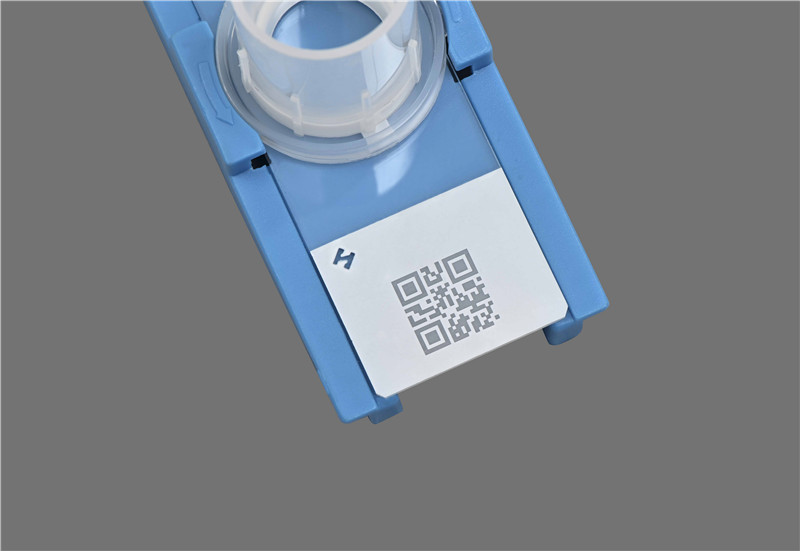Последний блог
Анализ преимуществ мощного УФ-лазера в области медицины
Jun 24 , 2022Analysis of advantages of high power uv laser in medical application field
Marking is critical for the medical device and pharmaceutical industries to enable product tracking and identification and combat counterfeiting. Usually, people use ink to print labels. In recent years, infrared lasers have been used for marking. But these methods have shortcomings. Ultraviolet diode-pumped solid-state lasers (DPSS) have truly overcome the drawbacks of other technologies, but were rarely used in the past due to their high cost. However, the substantial reduction in investment cost and acquisition cost makes UV laser marking attract more attention for medical applications. This article reviews the characteristics of UV laser marking and shows how UV laser marking can be used in certain medical and pharmaceutical industries.
medical marking
Compared with other industries, medical products have more unique requirements for marking. Pills are taken orally, and many other medical products (such as catheters, stents, etc.) are applied externally or implanted in patients. Therefore, it is generally required that the marking itself cannot be a source of contamination or contain chemical components that could cause allergic reactions. In addition, it is generally required that the marked surface be smooth after marking to avoid tissue damage and to avoid making the mark a breeding ground for bacteria.

uv laser | green laser | Ultraviolet lasers | uv dpss laser | nanosecond laser | UV laser source | Solid State Lasers
Medical markings are often also required to include batch numbers, serial numbers, or other identifying information that can identify when and where a particular product was manufactured. Therefore, if a product is found to be defective, users can easily confirm that the product they purchased is from the same batch.
Batch and source marking can also help address a growing problem in the pharmaceutical and medical industries, namely counterfeit and "marketplace" products. Sometimes counterfeit products simply rip off the label from the bottle and put a new one on. But Western countries are increasingly inundated with counterfeit medicines (often made in Asia) that look exactly the same but may contain the wrong dose or fail to meet the necessary quality control standards.
Therefore, the ideal medical mark should be difficult to erase, easy to identify, difficult to copy or replace, contains unique serialized information, and does not alter the functionality of the product.
traditional marking method
For the marking of medicines, medical devices and their packaging, the mainstream method has always been ink printing (inkjet or pad printing). Pills are usually stamped using gravure offset printing. For manufacturers, this printing method is chosen because of its relatively low investment cost. However, consumables (ink) costs are usually higher.
The main disadvantage of printing in medical applications is that the printed indicia are always easily removed or altered (especially if printed on paper labels). This means that after transportation, handling and storage, printed marks can become difficult to identify and easily counterfeited by those with ulterior motives. Print quality is also limited, creating problems if manufacturers want to squeeze more information, including QR codes, into a small area. For pill printing in particular, it is difficult to apply to the increasingly popular "soft gel capsules" because of the stress on the product during lithography.
Even though the inks used to print medicines and medical devices are non-toxic, the printing equipment itself is often "dirty", using airborne lubricants and solvents that can contaminate the printed product. In addition, printing equipment is often extremely complex and requires downtime for cleaning and maintenance.
Laser marking is a non-contact marking method that avoids contamination issues and requires no consumable costs. In addition, laser marking typically supports small print areas with high contrast and high resolution marks, and can be applied to curved or contoured surfaces.
Лазерная маркировка обычно использует CO2 или твердотельные лазеры в инфракрасном излучении. Сам процесс маркировки представляет собой термический процесс, при котором материал нагревается до тех пор, пока он не побелеет, не обуглится или не подвергнется абляции для создания цветового контраста. Почти все пластмассы напрямую поглощают тепловыделение CO2 в дальнем инфракрасном диапазоне, иногда с использованием поглощающих добавок в сочетании с твердотельными лазерами ближнего инфракрасного диапазона для облегчения этого процесса. Однако нагрев изменит химическую структуру материала ЗТВ и вызовет некоторые неровности на поверхности. Это обеспечивает дом для бактерий и его трудно чистить.
УФ-лазерная маркировка
По сравнению с инфракрасными лазерами, ультрафиолетовые лазеры и материалы в основном трудно взаимодействуют. В частности, УФ-излучение (355 нм) твердотельных лазеров с диодной накачкой с утроенной частотой поглощает гораздо больше, чем в длинноволновом диапазоне. Затем он подвергается люминохимическому (а не фототермическому) взаимодействию с наполнителями или пигментами пластика. Большинство пластиков белые, а пигментом является диоксид титана (TiO2), который сильно поглощает УФ-свет, а затем меняет свою кристаллическую структуру. Это приводит к тому, что вещество темнеет, создавая гладкие, хорошо читаемые следы внутри материала, а не на поверхности.
Поскольку метка фактически находится внутри материала, там нет питательной среды для бактерий, и практически невозможно изменить или повредить метку, не повредив сам материал. Кроме того, поскольку это процесс холодной обработки, практически нет зоны термического влияния и никаких изменений в окружающих материалах. Кроме того, высокая скорость поглощения УФ-света означает, что материал можно обрабатывать с помощью лазера меньшей мощности. Наконец, поскольку УФ-свет может быть сфокусирован более точно, чем инфракрасный свет, УФ-лазеры поддерживают маркировку сложных меток с высоким разрешением, таких как QR-коды.